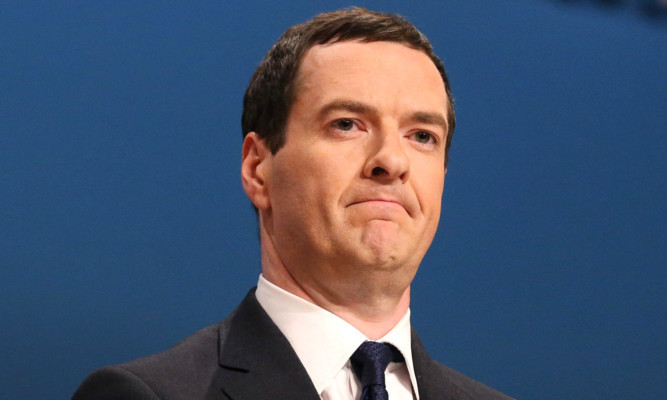Chancellor George Osborne is in “listening mode” over cuts to tax credits as he faces an attempt to kill off the measure in the House of Lords, a senior ministerial ally has said.
Cabinet Office minister Matthew Hancock’s comment appeared to signal that the Chancellor is ready to consider amendments in response to criticism of the cuts, which will slash £4.4 billion from working tax credit and child tax credit for some of the country’s poorest households.
Mr Hancock warned that a vote by peers to block or delay the changes would take Parliament down an “unprecedented constitutional path”.
Ministers are urging critics in the Lords to express their anxiety instead by backing a motion tabled by Church of England bishops expressing “regret” over the impact, but allowing the cuts to complete their parliamentary passage.
The prospect of the cuts being killed off altogether appears slim after a rare “fatal motion” tabled by Liberal Democrats failed to win the support of Labour.
However, Labour believes sufficient crossbench peers can be persuaded to back its bid to block them until the Treasury consults further and promises “full transitional protection” for at least three years.
Mr Hancock told BBC Radio 4’s Today programme: “George is very much in listening mode and the peers this afternoon have the opportunity through a motion put down by the Bishop of Portsmouth to express regret at this measure without breaking these constitutional conventions.
“I hope that they don’t, I hope they support the measures, because they are part of a package to get this country to live within its means and to support work and to support people getting into work, and I think that they are important.”
More than three million families will lose an average of £1,300 a year from April. But Mr Hancock said eight out of 10 would be “better off” overall from a package which also includes increases in the minimum wage for over-25s, rises in the income tax threshold and extended free childcare.
The respected Institute for Fiscal Studies (IFS) says higher wages will make up for only a fraction of the loss of income – and the Chancellor has refused to publish Treasury analysis.
Ministers are urging the Lords to respect century-old conventions that the unelected upper chamber does not block financial measures approved by the Commons or manifesto commitments.
Senior figures have warned of serious repercussions, with Prime Minister David Cameron even failing to rule out handing out a hundred of more new Tory peerages to give his party a majority.
Lords leader Baroness Stowell, rather than a Treasury minister, will lead the debate as the Government seeks to press home warnings against what it says would amount to “constitutional vandalism”.
But peers insist they are free to act because the measures were not specifically set out before May’s election and are being pushed through as a Statutory Instrument (SI), not a formal Bill. Asked in a pre-election TV debate whether he planned to cut child tax credit, Prime Minister David Cameron replied: “No, I don’t want to do that.”
Labour’s leader in the Lords, Baroness Smith of Basildon, said the SI had been used deliberately “to sidestep the more usual detailed parliamentary scrutiny”.
She said: “The threats we are now hearing have nothing to do with reform, and all to do with a Government that hates challenge and will try any trick in the political playbook to get its way.
“We will not exceed our authority but neither will we be cowed into abdicating our responsibilities to hold government – any government – to account.”
But Mr Hancock warned: “The conventions say that the Lords does not block financial measures that affect the budget of the country … The House of Commons has debated this three times, it passed this statutory instrument with a majority of 35 – which is almost three times the Government’s majority.
“We want to listen to the views, which I respect, from the House of Lords. But we hope they will not take us down an unprecedented constitutional path.”
Mr Hancock insisted that the Tories had signalled their plans to cut tax credits in their manifesto: “We did. We set out that we were going to seek £12 billion of welfare savings. This is just over £4 billion of it.”
As the changes to child tax credit announced by Mr Osborne in July’s Budget do not cut the level of child tax credit, but restrict it to the first two children, Mr Hancock said they were “consistent with what the Prime Minister said then”.
MPs will have a fourth chance to vote on the cuts on Thursday – after Conservative backbenchers David Davis and Zac Goldsmith joined forces with Labour’s Frank Field to secure a cross-party debate.
The result is not binding but defeat would be a severe embarrassment for the Chancellor.
A poll found 57% of people said George Osborne’s plans to cut tax credits should not go ahead as planned.
The YouGov survey on 1,625 adults commissioned by campaign group 38 Degrees and conducted last week found 28% thought more negatively about the Government as a result of the controversy.
